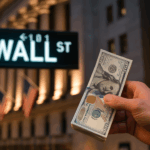Digital wallets have rapidly evolved into a vital component of modern payment systems, now attracting significant attention from consumers and businesses alike. With the escalating complexity of financial transactions and advancing technology, both established firms and emerging players aim to redefine cashless transactions. Apple (NASDAQ:AAPL) Pay, among others, has witnessed substantial growth, but new challengers from Google (NASDAQ:GOOGL) Pay to Cash App are keen on reshaping the landscape of contactless payments.
Apple Pay, launched 11 years ago, is seeing increased usage, with transactions reaching around $450 billion annually. However, it faces growing competition as weekly in-store usage of digital wallets more than doubles compared to the previous year. While Apple Pay remains a leader, alternative payment platforms have emerged, attracting a larger user base. Google Pay, for instance, has shown remarkable growth, doubling its users, while PayPal and Cash App have achieved similar strides in user adoption.
What Drives Consumers to Digital Wallets?
Increasing reliance on digital wallets is mainly driven by convenience and enhanced security features. A significant number of consumers are turning to mobile wallets in scenarios where they forget their physical cards. The speed and perceived security of transactions are also critical factors contributing to this shift. While card-based transactions continue to dominate, digital wallet usage is becoming more prevalent across various demographics.
How Are Rivals Catching Up to Apple Pay?
Apple Pay remains a strong contender in the digital wallet arena, yet its competitors are closing the gap. Google’s and Cash App’s user base enhancements indicate a growing interest in versatile payment solutions. As these competitors evolve, they reshape consumer expectations and redefine what constitutes a contactless transaction.
A survey conducted between August 14, 2025, and September 22, 2025, gathers insights on how U.S. consumers are embracing digital payments. According to the report, more than 30% now use digital wallets weekly in-store, a notable increase from 14% in the previous year. We find that while digital payments are embedded into day-to-day transactions, the majority still prefer traditional credit and debit cards as foundational payment methods.
“The shift is about how consumers pay—not yet what they pay with,” emphasizes a key aspect of this evolving market dynamic.
This observation underlines the ongoing transition, as many still prefer physical cards, even as mobile wallets gain traction.
Another critical insight from the report is the proportional growth of digital balance payments, which have increased from 1% to 3.7% since 2023. This shift highlights a gradual acceptance of alternative payment mechanisms alongside traditional methods. As a result, issuers and merchants have new opportunities for customizing their offerings to capture these evolving consumer trends.
The ever-changing dynamics of the digital wallet market prompt companies to innovate consistently. Both well-established brands and up-and-coming firms are vying for consumer attention, offering various features to enhance user experience while ensuring security. As Apple Pay and its peers compete for a more significant share of the contactless arena, consumers can expect a wider array of choices for mobile payments.










